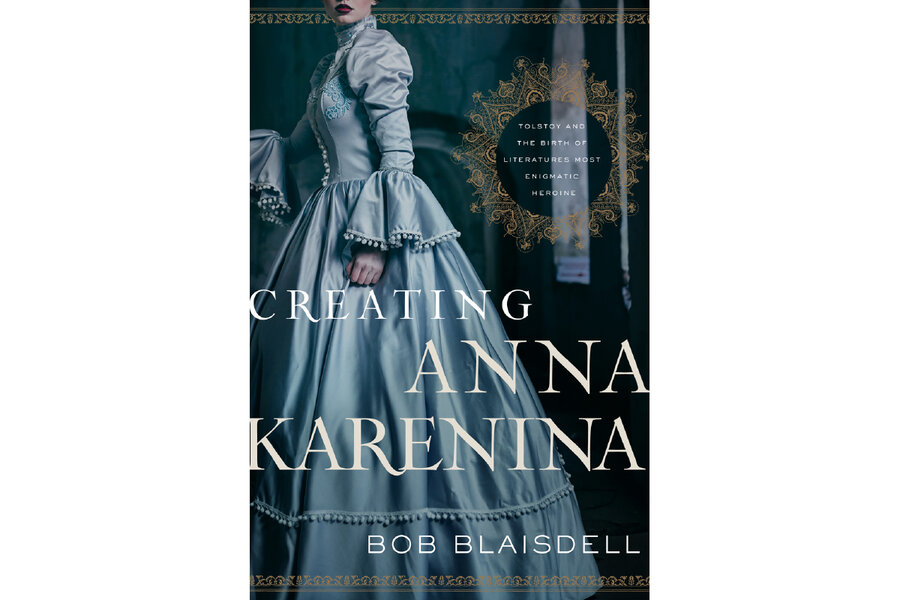Tolstoy suffered writer’s block as he worked on ‘Anna Karenina’
Loading...
The novel “Anna Karenina” ranks as one of the greatest works in Western literature. Vladimir Nabokov described it as “the supreme masterpiece of nineteenth-century literature.” It regularly sits atop famous writers’ lists of favorite books. Bob Blaisdell, a professor of English at the City University of New York, was so enamored that he read the book some 20 times, and then learned Russian so he could read it in the original language.
Now Blaisdell, who also reviews books for the Monitor, has written an engaging and insightful book about Leo Tolstoy’s struggle to complete his masterpiece. “Creating Anna Karenina: Tolstoy and the Birth of Literature’s Most Enigmatic Heroine” is packed with telling insights and details about Tolstoy’s life that shaped the direction of the book.
Tolstoy originally conceived of “Anna Karenina” as a novella that he hoped to knock out quickly. He completed an outline in just a few weeks, but then things slowed down because Tolstoy was a gifted procrastinator. Blaisdell estimates that in 30 of the 53 months that he worked on the book, Tolstoy did not touch the manuscript.
Partly this lack of progress could be attributed to a busy and sometimes tragic family life – three of his children died as he worked on the book. His professional life included working to reform Russian education. And he was devoted to his hobbies – horses, travel, and hunting.
Tolstoy came to actively dislike the project. At various points he wrote that the book was “sickening to me,” “unbearably repulsive,” “terribly disgusting and nasty,” and “a bore, insipid as a bitter radish.” At one point he proclaimed in a letter, “[I] have stopped publishing my novel and want to give it up, I dislike it so much.”
Thankfully for literature, Tolstoy persevered. Partly, this was the result of the inner fire that can propel genius to accomplish amazing things. Equally important were the roles played by his wife, Sophia, and his friend, Nikolai Strakhov. Sophia – who would eventually give birth to 13 children, oversee their education, and manage the house by day – patiently recopied draft after draft of the manuscript at night. “She was almost always on the job, right there, the sympathetic, forbearing midwife to artistic creation.”
Strakhov was a critic and for many years Tolstoy’s closest friend and most perceptive reader. Tolstoy repeatedly sought reassurance from Strakhov that he was on the right track and always received it. Indeed, Strakhov once wrote to Tolstoy, “You and your novels – for already a long time are the best parts of my life.”
Tolstoy’s conception of Anna changed as he wrote and this further challenged the author. Initially he saw her simply as a cheating wife who had run off with another man and deserved neither sympathy nor pity for her fate. But over time she became a more complete and rounded person. Indeed, she emerges from the pages of the novel as a beautiful, elegant, charming, and intelligent woman who “strikes us ... as a goddess would.” Yes, she was flawed. But the more he wrote, the more her humanity emerged and he began, according to Blaisdell, to “love” her.
Perhaps the biggest reason for the long gestation was that Tolstoy was beginning to wrestle with the thoughts and feelings that, later in life, would lead him to renounce his wealth and become a pacifist and Christian anarchist. He would document and explain this midlife crisis a few years later in “My Confession” (published 1882). But while writing the novel, Tolstoy found himself torn between bouts of pleasure and happiness and periods of depression and despair so severe that he apparently considered suicide. Blaisdell concludes that by writing in such detail about Anna’s descent into madness and suicide, Tolstoy may have survived his own depression.
“Creating Anna Karenina” is the product of a lifetime of study. It demonstrates extensive research and great learning and is written by a gifted storyteller. The good news is that the book is not simply an academic treatise and will appeal to general readers. Indeed, Blaisdell’s sly humor and deprecating wit add to the pleasure of reading it.
This volume is unlikely to be read by those who have never read “Anna Karenina.” But for those who have, Blaisdell offers intriguing insights and fresh perspectives that will no doubt lead some, including this writer, to reread Tolstoy’s great masterpiece with renewed appreciation.








